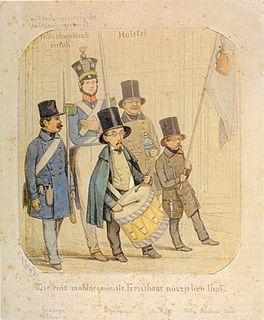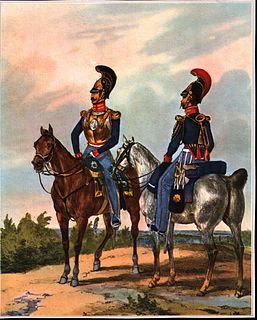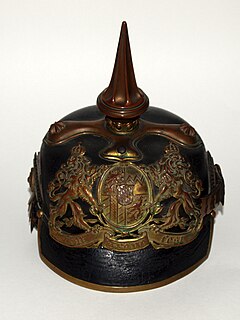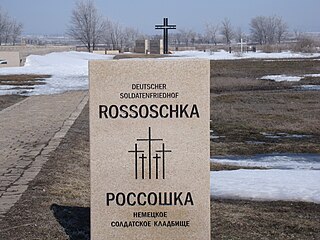 W
WArmeeoberkommando was a command level in the German and Austro-Hungarian armies, especially during the World War I and World War II. It was equivalent to a British, French, American, Italian, Japanese, or Imperial Russian "Army".
 W
WThe Battle at Pontes Longi was fought near Bramsche, Germany in 15 AD between the Roman general Aulus Caecina Severus and an alliance of Germanic peoples commanded by Arminius. It was part of a three-year series of campaigns by Germanicus in Germania. The battle was inconclusive.
 W
WThe Bremen-Verden Campaign was a conflict during the Northern Wars in Europe. From 15 September 1675 to 13 August 1676 an anti-Swedish coalition comprising Brandenburg-Prussia, the neighbouring imperial princedoms of Lüneburg and Münster, and the Kingdom of Denmark, conquered the Duchies of Bremen and Verden.
 W
WThe Bundeswehr is the unified armed forces of Germany and their civil administration and procurement authorities. The states of Germany are not allowed to maintain armed forces of their own, since the German Constitution states that matters of defense fall into the sole responsibility of the federal government.
 W
WFreikorps were irregular German and other European military volunteer units, or paramilitary, that existed from the 18th to the early 20th centuries. They effectively fought as mercenary or private armies, regardless of their own nationality. In German-speaking countries, the first so-called Freikorps were formed in the 18th century from native volunteers, enemy renegades, and deserters. These sometimes exotically equipped units served as infantry and cavalry, sometimes in just company strength, sometimes in formations up to several thousand strong. There were also various mixed formations or legions. The Prussian von Kleist Freikorps included infantry, jäger, dragoons and hussars. The French Volontaires de Saxe combined uhlans and dragoons.
 W
WThe Freischar was the German name given to an irregular, volunteer military unit that, unlike regular or reserve military forces, participated in a war without the formal authorisation of one of the belligerents, but on the instigation of a political party or an individual. A Freischar deployed against a foreign enemy was often called a Freikorps. The term Freischar has been commonly used in German-speaking Europe since 1848. The members of a Freischar were called Freischärler. As early as 1785 Johann von Ewald published in Kassel his Essay on Partisan Warfare, which described his experiences with the rebels in the North American colonies.
 W
WThe German Federal Army was the military arm of the German Confederation from 1815 to 1866 whose purpose was the defence of the Confederation against external enemies. Although the Congress of Vienna in 1815 decreed the formation of the army and delimited its size and purpose, no work on its formation was begun until 1841, after the Rhine crisis brought the threat of war to Germany. Even then, only preliminary work was accomplished on troop readiness. Most work focused on the building of federal fortresses.
 W
WThe German General Staff, originally the Prussian General Staff and officially Great General Staff, was a full-time body at the head of the Prussian Army and later, the German Army, responsible for the continuous study of all aspects of war, and for drawing up and reviewing plans for mobilization or campaign. It existed unofficially from 1806, and was formally established by law in 1814, the first general staff in existence. It was distinguished by the formal selection of its officers by intelligence and proven merit rather than patronage or wealth, and by the exhaustive and rigorously structured training which its staff officers undertook. Its rise and development gave the German armed forces a decisive strategic advantage over their adversaries for nearly a century and a half.
 W
WGerman rearmament was a policy and practice of rearmament carried out in Germany during the interwar period (1918–1939), in violation of the Treaty of Versailles. It began on a small, secret, and informal basis shortly after the treaty was signed,but it was openly and massively expanded after the Nazi Party came to power in 1933.
 W
WThe Großer Zapfenstreich is a military ceremony performed in Germany and Austria. It is similar to the military tattoo ceremony performed in English-speaking countries, and is the most important ceremonial act executed by the German federal armed forces, the Bundeswehr, and by the Austrian federal armed forces Bundesheer. The Zapfenstreich is performed only during national celebrations and solemn public commemorations, to honour distinguished persons present at such special events. Examples are the farewell ceremony for a German federal president, or at the conclusion of large military exercises. It takes place in the evening hours and consists of a military formation of at least one military band, two platoons of armed infantrymen, and two lines of soldiers carrying torches, in total about 400 men.
 W
WThe history of the German Army Aviation Corps goes back to the time when the German Wehrmacht first began to develop helicopters.
 W
WThe Battle of Idistaviso, sometimes known as a first Battle of Minden or Battle of the Weser River, was fought in 16 AD between Roman legions commanded by Roman emperor Tiberius' heir and adopted son Germanicus, and an alliance of Germanic peoples commanded by Arminius. The battle marked the end of a three-year series of campaigns by Germanicus in Germania.
 W
WThe Deutsche Luftstreitkräfte —known before October 1916 as Die Fliegertruppen des deutschen Kaiserreiches abbreviated to Die Fliegertruppe—was the air arm of the Imperial German Army. In English-language sources it is usually referred to as the Imperial German Air Service, although that is not a literal translation of either name. German naval aviators of the Marine-Fliegerabteilung were an integral part of the Imperial German Navy. Both military branches operated aeroplanes, observation balloons and airships.
 W
WIn German-speaking countries, the term Landsturm was historically used to refer to militia or military units composed of troops of inferior quality. It is particularly associated with Prussia, Germany, Austria-Hungary, Sweden and the Netherlands.
 W
WThe Deutsche Luftstreitkräfte —known before October 1916 as Die Fliegertruppen des deutschen Kaiserreiches abbreviated to Die Fliegertruppe—was the air arm of the Imperial German Army. In English-language sources it is usually referred to as the Imperial German Air Service, although that is not a literal translation of either name. German naval aviators of the Marine-Fliegerabteilung were an integral part of the Imperial German Navy. Both military branches operated aeroplanes, observation balloons and airships.
 W
WThe Military History Research Office is an office of the Bundeswehr located at Potsdam, Germany.
 W
WThe Pickelhaube, also Pickelhelm, is a spiked helmet worn in the 19th and 20th centuries by Prussian and German military, firefighters and police. Although typically associated with the Prussian Army, which adopted it in 1842–43, the helmet was widely imitated by other armies during that period. It is still worn today as part of ceremonial wear in the militaries of certain countries, such as Sweden, Chile, and Colombia.
 W
WPigeon photography is an aerial photography technique invented in 1907 by the German apothecary Julius Neubronner, who also used pigeons to deliver medications. A homing pigeon was fitted with an aluminium breast harness to which a lightweight time-delayed miniature camera could be attached. Neubronner's German patent application was initially rejected, but was granted in December 1908 after he produced authenticated photographs taken by his pigeons. He publicized the technique at the 1909 Dresden International Photographic Exhibition, and sold some images as postcards at the Frankfurt International Aviation Exhibition and at the 1910 and 1911 Paris Air Shows.
 W
WPlan XVII was the name of a "scheme of mobilization and concentration" that was adopted by the French Conseil Supérieur de la Guerre (the peacetime title of the French Grand Quartier Général from 1912 to 1914, to be put into effect by the French Army in the event of war between France and Germany. Though it was not "a prescribed narrative for the campaign" or battle plan, the deployment made possible a prompt invasion of Germany and/or Belgium before Germany could mobilise its reserves, simultaneous to a Russian invasion of East Prussia.
 W
WThe Reichswehr formed the military organisation of Germany from 1919 until 1935, when it was united with the new Wehrmacht.
 W
WThe Occupation of the Rhineland from 1 December 1918 until 30 June 1930 was a consequence of the collapse of the Imperial German Army in 1918. Despite Germany's proving victorious on the eastern front following the Russian Revolution, the military high command had failed to prevent the continuing erosion of morale, both domestically and in the army. Despite transferring veteran troops from the eastern front to fight on the western front, the Spring Offensive was a failure and following the outbreak of the German Revolution, Germany's provisional government was obliged to agree to the terms of the 1918 armistice. This included accepting that the troops of the victorious powers occupied the left bank of the Rhine and four right bank "bridgeheads" with a 30 kilometres (19 mi) radius around Cologne, Koblenz, Mainz and a 10 kilometres (6 mi) radius around Kehl. Furthermore, the left bank of the Rhine and a 50 kilometres (31 mi)-wide strip east of the Rhine was declared a demilitarized zone. The Treaty of Versailles repeated these provisions, but limited the presence of the foreign troops to fifteen years after the signing of the treaty. The purpose of the occupation was on the one hand to give France security against a renewed German attack, and on the other to serve as a guarantee for reparations obligations. After this was apparently achieved with the Young Plan, the occupation of the Rhineland was prematurely ended on 30 June 1930. The administration of occupied Rhineland was under the jurisdiction of the Inter-Allied Rhineland High Commission with its seat at the Upper Presidium of the Rhine Province in Koblenz.
 W
WThe Rossoschka German War Cemetery is located 37 kilometers northwest of the city center of Volgograd on the Rossoschka river. It is a resting place and a place of remembrance for those who died in the Battle of Stalingrad and for those missing whose bodies could not be recovered. The Soviet war cemetery Rossoshka is also located nearby and contains Russian burials from the same battle..
 W
WSologubovka Cemetery is a German war cemetery and the final resting place of over 30,000 German war dead from World War II. Located 70 kilometres (43 mi) southeast of St. Petersburg in northwestern Russia, it has a planned capacity for a further 50,000 new burials of previously lost German war dead.
 W
WTomka gas test site was a secret chemical weapons testing facility near a place codenamed Volsk-18, now Shikhany, Saratov Oblast, Russia created within the framework of German-Soviet military cooperation to circumvent the demilitarization provisions of the post-World War I Treaty of Versailles. It was co-directed by Yakov Fishman, and German chemists Alexander von Grundherr and Ludwig von Sicherer. It operated during 1926-1933.
 W
WThe United States Constabulary was a United States Army military gendarmerie force. From 1946 to 1952, in the aftermath of World War II, it acted as an occupation and security force in the U.S. Occupation Zone of West Germany and Austria.
 W
WThe Battle of Vosges, also referred to as the Battle of Vesontio, was fought in 58 BC between the Germanic tribe of the Suebi, under the leadership of Ariovistus, and six Roman legions under the command of Gaius Julius Caesar. This encounter is the third major battle of the Gallic Wars. Germanic tribes crossed the Rhine, seeking a home in Gaul.
 W
WThe governments of the German Empire and Nazi Germany ordered, organized and condoned a substantial number of war crimes, first in the Herero and Namaqua genocide and then in World War I and World War II. The most notable of these is the Holocaust in which millions of Jews and Romani were systematically murdered. Millions of civilians and prisoners of war also died as a result of German abuse, mistreatment, and deliberate starvation policies in those two conflicts. Much of the evidence was deliberately destroyed by the perpetrators, such as in Sonderaktion 1005, in an attempt to conceal the crimes.